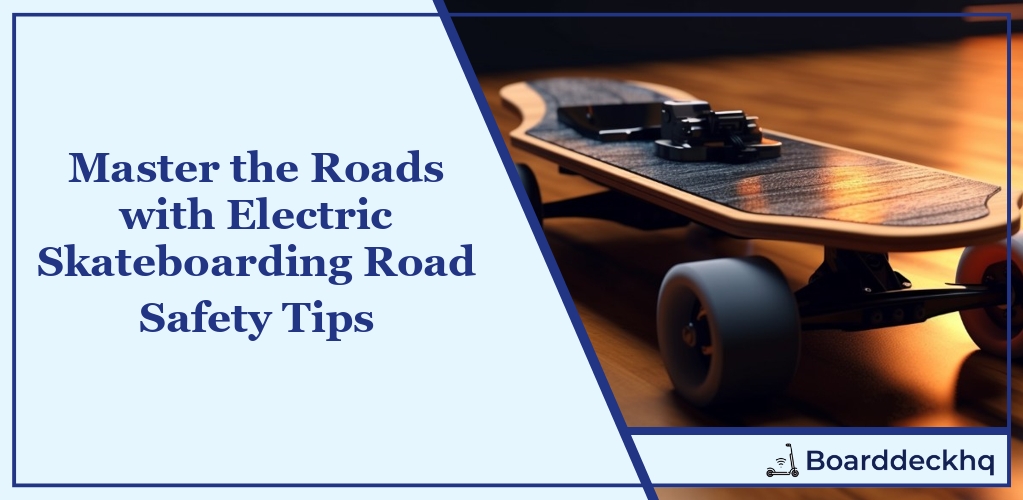Imagine cruising down a sunlit boulevard aboard your sleek electric skateboard — an exhilarating picture of freedom, isn’t it? This thrill, however, comes with its own set of challenges and risks. In this comprehensive guide, we’ll arm you with essential road safety tips for electric skateboarding to ensure that each ride is not only an adrenaline rush but also a safe and responsible experience.
What we’ll cover:
- Electric Skateboard Safety Basics
- Importance of Protective Gear
- Mastering Skateboard Controls
- Responding to Road Conditions
- Weather Impacts on Safe Riding
- Responsible Skateboarding Regulations
Ready to roll? Let’s jump right in and show you how to navigate the streets safely on your electric skateboard.
Understanding Electric Skateboard Safety
When you hear the term “electric skateboard,” many of us can’t help but think of the thrill and exhilaration that comes with it. However, it’s not all fun and games. Safety is of paramount importance when riding an electric skateboard. Taking precautions can significantly reduce the risk of injury.
An electric skateboard brings a unique set of challenges, including handling higher speeds, navigating different terrains, and understanding the board’s electromechanical system. You can’t underestimate the importance of equipping yourself with relevant safety tips, as they play a critical role in ensuring you have a safe ride while enjoying your electric skateboard.
Safety should never be compromised for the sake of thrill or convenience. It’s essential to understand the risk of injury associated with electric skateboards and employ appropriate safety measures. With relevant electric skateboard safety tips, you can enjoy your ride while keeping injuries at bay.
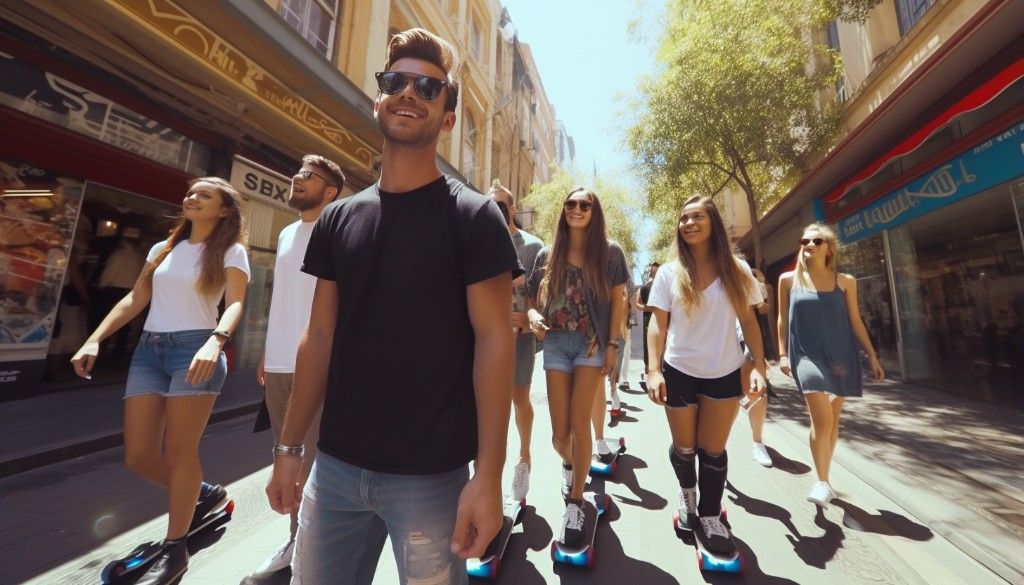
Emphasizing the Importance of Protective Gear
So, what’s the best way to ensure safety while riding your skateboard? One word. Gear. Yes! Wearing protective gear is essential for every rider.
This raises a critical question — what type of protective gear should you consider? The bare basics include a helmet, knee and elbow pads, and glove protection. Each piece of gear plays a crucial role in protecting different parts of your body.
For instance, wearing a helmet to protect your head from any unforeseen accidents is an absolute necessity while on an electric skateboard. You only have one brain, after all! It’s not an exaggeration to say that wearing a helmet can be the difference between walking away from a crash and being carried away.
Knee and elbow pads , along with wrist guards, are equally important. They protect your joints from scrapes and fractures in case of a fall.
Furthermore, some brands also produce additional protective gear such as padded shorts, jackets, and back protectors. These products can help protect you against spinal injuries and provide you with peace of mind while you ride.
The mantra here is simple — wear protective gear every time you’re on the board. It’s not about looking cool or being comfortable; it’s about safety first. Regardless of how experienced you are, wear protective gear all the time because accidents don’t discriminate based on experience level.
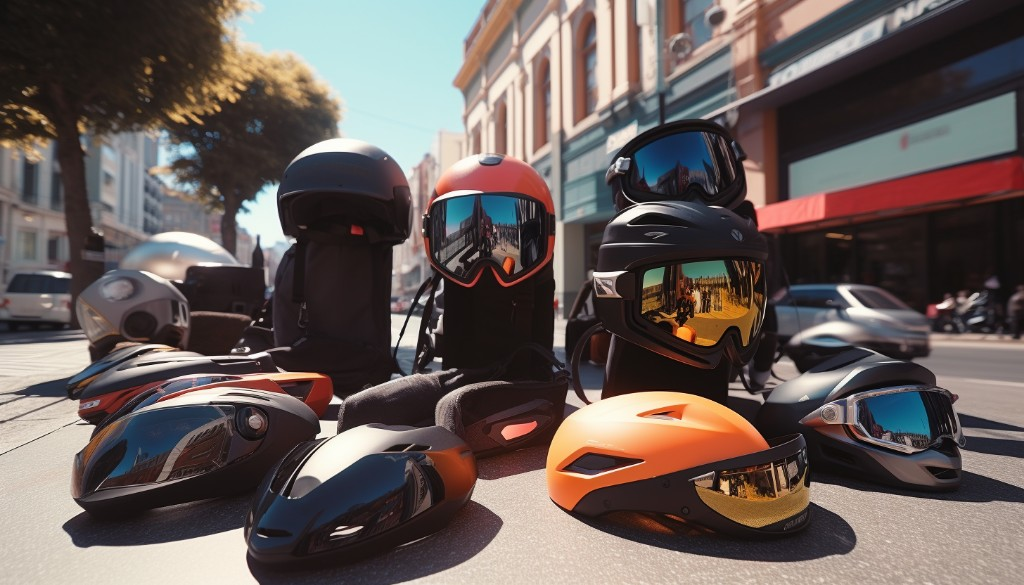
Mastering the Controls of Your Electric Skateboard
Now that we have covered safety and protective gear, let’s talk about controlling your ride. Riding an electric skateboard requires you to grasp various controls such as acceleration, braking, steering, and turning.
If you’re new to the world of electric skateboarding, don’t rush to hit high speeds immediately. Start by learning how to handle slower speeds and increase this incrementally. This advice may sound mundane but trust me; it’s essential for your safety while riding an electric skateboard.
Steering and turning might seem tricky initially, but with practice, they become second nature. Remember that controlling your board is more than just about maintaining balance; it’s about understanding how to guide your board smoothly in the direction you want to go.
Braking is another crucial aspect you need to master when riding an electric skateboard. Slowing down or stopping your board is more intricate than just hitting the brakes like in a car. Practice your braking techniques on safe terrains before heading out into traffic or on downhill rides.
In essence, if you want to ensure a safe and enjoyable ride, you need to prioritize learning the basic controls of your electric skateboard. Only then can you truly make the most out of this thrilling experience!
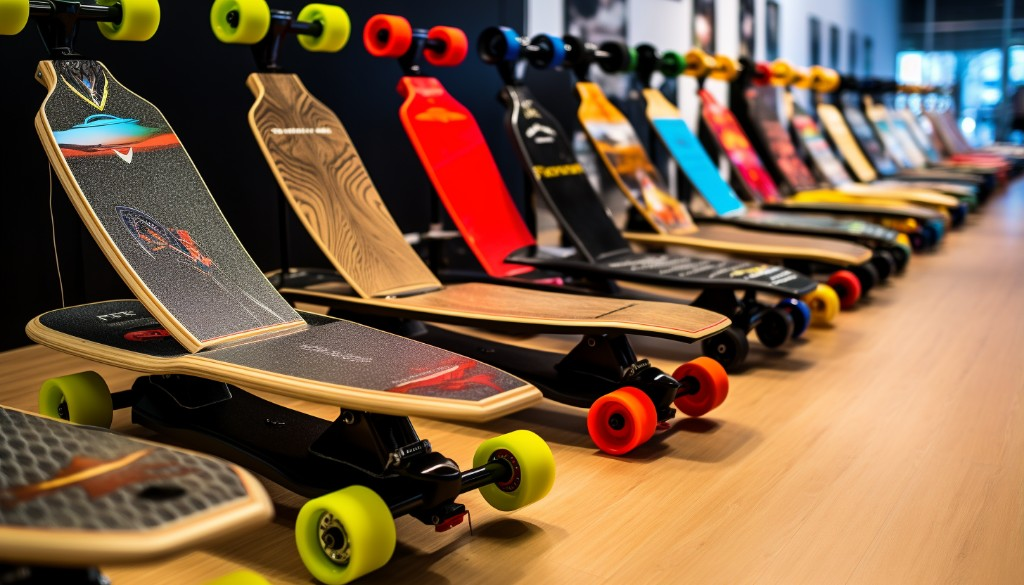
Recognizing and Responding to Road Conditions
When cruising on your electric skateboard, becoming accustomed to recognising different road conditions can majorly affect your overall experience. When it comes to surfaces, not all roads are created equal. Pavement quality varies drastically, with some surfaces being impeccably smooth and others riddled with potholes and rugged patches.
Understanding Various Road Surface Conditions
Different surfaces offer diverse skating experiences. In one scenario, you might encounter a smooth asphalt road, which feels as smooth as silk under your wheels, allowing you to glide effortlessly. On the other hand, a gravel road might require more attention and effort, and could potentially damage your board. Brick and cobblestone surfaces, while aesthetically pleasing, can make for a bumpy ride and increase the likelihood of falling off your board.
Avoiding Obstacles and Potholes
It’s crucial to note that obstacles such as potholes, debris or even small objects like pebbles can become significant hazards when you’re moving at speed on your electric skateboard. It’s advisable to maintain a keen eye on the path ahead to avoid these obstacles.
Impact of Friction
Friction plays a significant role in safe electric skateboarding. It’s the force that both propels the board forward and enables it to stop. A lack of friction (like when riding on slippery surfaces) may cause you to lose control of your board. Always ensure to check your skateboard wheels for any signs of wear and tear as these could decrease the friction between your board and the surface of the road.

Acknowledging the Impact of Weather Conditions on Safe Riding
Riding conditions are also significantly influenced by weather conditions. It’s not just about whether it’s sunny or rainy; temperature, humidity, wind speed, and even air pressure can impact your electric skateboarding experience.
The Effects of Weather on Electric Skateboarding
Adverse weather conditions can make electric skateboarding particularly challenging. For instance, rain makes surfaces slippery and reduces visibility, increasing the chance of accidents. Both cold and hot weather can also affect battery performance, reducing the speed and range of your skateboard.
Following Regulations for Responsible Electric Skateboarding
Abiding by traffic rules is crucial for responsible electric skateboarding. Ignoring them not only puts you at risk but also jeopardizes the safety of pedestrians and other motorists.
Abiding by Traffic Rules
For starters, become familiar with local laws regarding electric skateboarding in your area. In many places, riders are required to follow the same rules as cyclists, meaning you need to have traffic awareness to navigate roads safely.
Ensuring Adherence to Sidewalk Usage Rules
Most areas have specific rules about using sidewalks for electric skateboarding. The general rule of thumb is to give way to pedestrians at all times.
Being Mindful of Pedestrians and Vehicles
It’s vital to maintain an assured clear distance ahead while riding on roads shared with vehicles. This means keeping enough space between you and the vehicle in front of you to stop safely if needed. Also, be aware of traffic light signals and always yield to pedestrians.
Riding responsibly also involves courteous vehicle interaction. This means signaling before making turns or changing lanes and respecting right-of-way rules at intersections.
Remember, electric skateboarding isn’t just about enjoyment; it’s also about exercising responsibility for your safety and the safety of others around you.
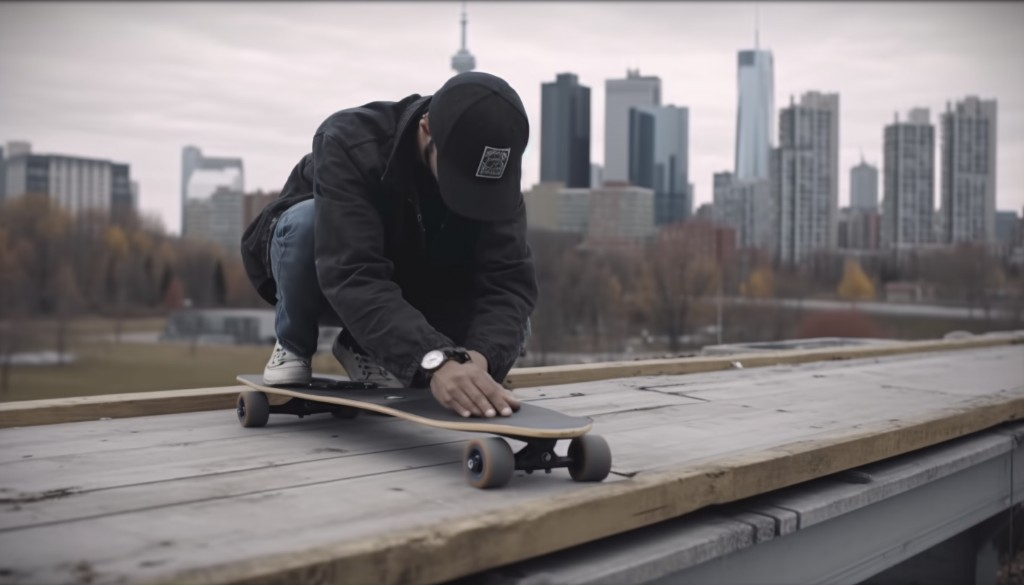 Ensuring Regular Maintenance for Your Electric Skateboard
Ensuring Regular Maintenance for Your Electric Skateboard
Just like any other gadget or transportation device, maintaining your electric skateboard is critical to its performance and longevity. Carrying out some basic checks before each ride will enable you to have a safe and enjoyable ride.
Battery Maintenance
One of the key considerations in keeping your skateboard safe and in prime condition, is battery maintenance. It’s the heart of your electric skateboard, and if it dies or malfunctions, you’re left with just a regular board. To prevent this, make sure to charge the battery regularly, but avoid overcharging it. Keep in mind to store it in a cool, dry place, as extreme temperatures can affect its performance. By following this advice, you can ensure the longevity of your electric skateboard battery.
Inspecting Your Wheels
Now, let’s talk about wheel maintenance. A smooth ride is provided by well-kept wheels which is why it is essential to check them regularly for any signs of wear and tear. Checking for sharp objects or debris and replacing them immediately once they’re worn out will ensure you stay safe while riding an electric skateboard.
Ensuring Brake Functionality
Brakes are one of the most important safety features of any transportation device. If the brakes on your electric skateboard are not working properly, it can lead to accidents and injuries. Always check their functionality before hitting the road ad consult a professional if they appear to be defective.

Enhancing Visibility for Night Riding
Night riding can be an exhilarating experience but it comes with its own set of challenges, particularly when it comes to visibility. One way to enhance your visibility during night riding is by using headlamps. Not only does this allow you to see where you’re going but also makes you more visible to others.
Reflective clothing can also significantly increase your visibility. Wearing bright colors or clothing with reflective strips can make you more noticeable to drivers and other road users, lowering the risk of accidents and injuries.
Other Visibility Improving Techniques
As well as headlamps and reflective clothing, you can also use bike lights attached to the bottom of your board. Some electric skaters also use LED lights in their backpacks or helmets for added visibility. Remember, the important thing is that you’re seen by others to avoid any potential mishaps.
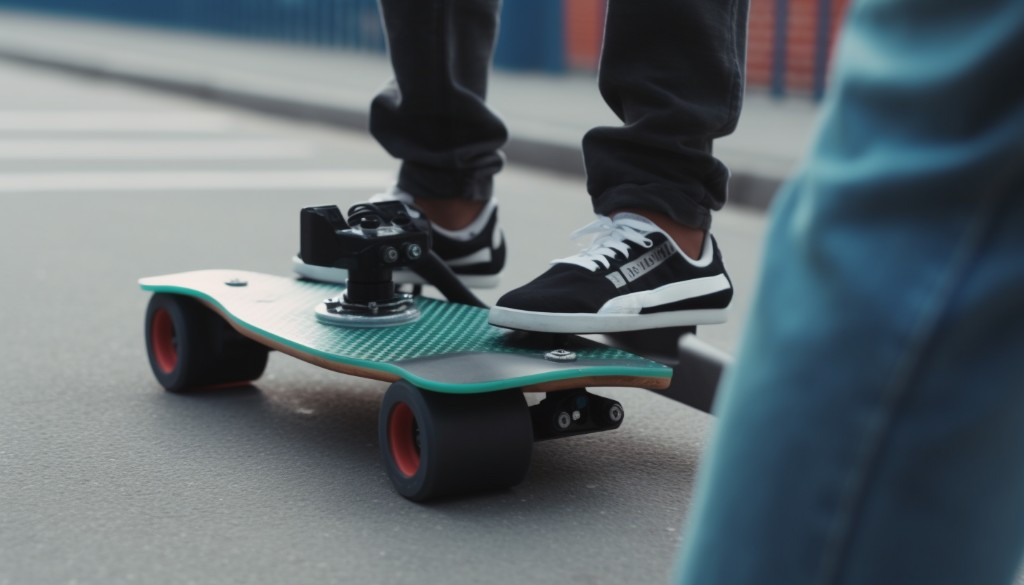
Learning Defensive Driving Techniques for Safer Riding
The open road can be unpredictable, and when you’re on an electric skateboard, the risk of injury is higher due to the lack of protection compared to a vehicle. That’s where defensive driving techniques come in handy. Defensive driving techniques include predicting what other drivers might do, reacting quickly to potential hazards, and always being prepared for the unexpected. These skills not only help in avoiding accidents but also ensure a smooth and enjoyable ride on your electric skateboard.
Car Avoidance Techniques
Being aware of cars around you is one of the most important things for electric skateboarders. Always maintain a safe distance from cars and be aware of blind spots where drivers may not see you, and adjust your riding accordingly.
Hazard Recognition and Lane Awareness
Recognizing potential hazards ahead of time gives you the chance to react and avoid them. Be it potholes, puddles or debris on the road; proactive observation can save you some serious trouble. Also, being aware of your lane and sticking to it is crucial to avoid any traffic collision.
Understanding the Risks of Alcohol and Drug Use
It’s essential to be aware of the risks associated with alcohol and drug use, specifically when it comes to riding on the road. Consuming alcohol or drugs not only impairs your judgement but also affects your ability to make safe, responsible decisions. This is particularly dangerous when you’re in control of a skateboard, as the risk of accident significantly increases.
When under the influence of alcohol or drugs, your vision may become blurred and your reflexes may slow down. These effects make it challenging to maintain balance, increasing the likelihood of falling off your skateboard. Moreover, your ability to judge distance and speed can be compromised, and you may find it difficult to react quickly to sudden events on the road.
The consequences can be severe. Apart from injuries to yourself, you could cause accidents involving other road users, pedestrians, or property. Legal repercussions may also follow, as many areas have strict laws against riding under the influence.
To minimize these risks, alcohol avoidance is key. By choosing not to drink alcohol or use drugs before skateboarding, you’re taking a significant step towards ensuring your safety and the safety of those around you.
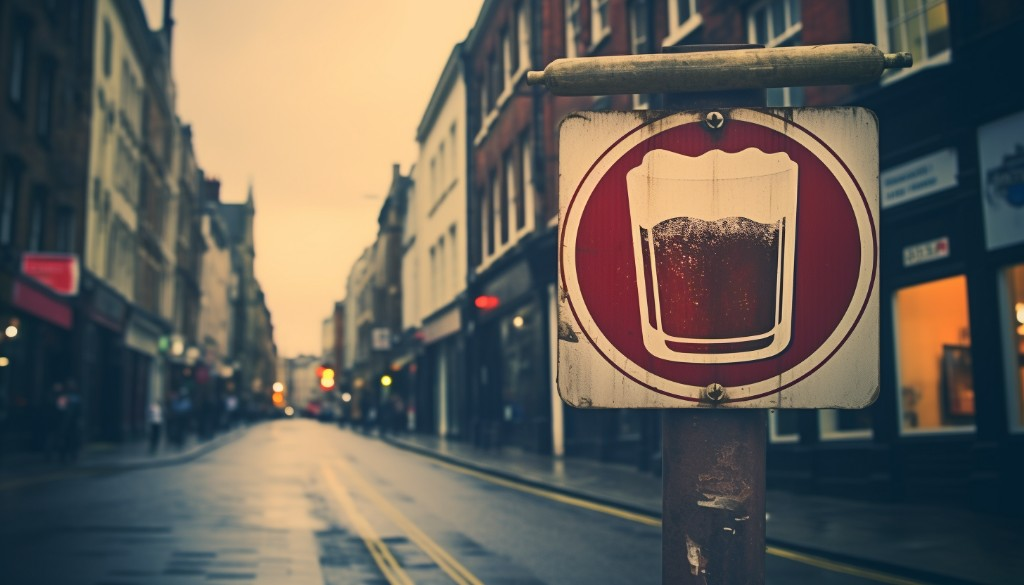
Respecting Others on the Road
Skateboarding is an excellent way to get around, providing both a fun activity and an efficient means of transport. However, it’s essential that we respect others while we’re out on the road. This involves understanding skateboarding etiquette, prioritising pedestrian safety and showing respect for other road users.
Skateboarding etiquette involves several key principles. For instance, you should yield to pedestrians on sidewalks, avoid blocking entrances or exits, and respect private property. If you’re skating in a group, try not to take up the entire pathway or street and always stop at red lights and stop signs.
Pedestrian safety is paramount when skateboarding. It’s crucial to keep a safe distance from them and adjust your speed accordingly. Be especially cautious around children, elderly people, and pets as their movements can be unpredictable.
Finally, showing respect for other road users is crucial. This means being aware of vehicles around you, not cutting off cars or bikes, and using hand signals to communicate your intentions.
By embracing these principles and promoting a safe and respectful skateboarding culture, we can ensure that everyone has an enjoyable experience on the roads.
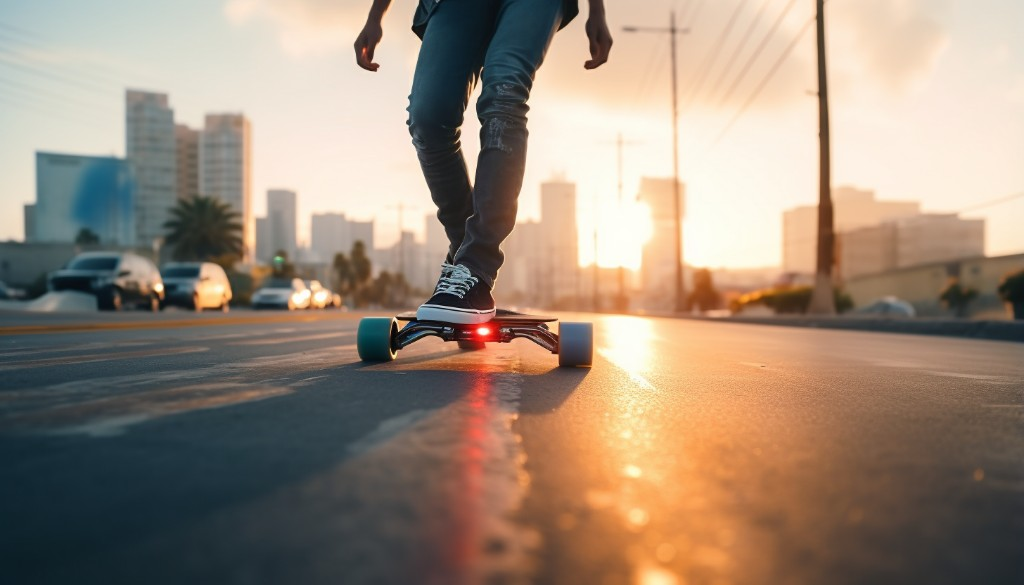
Closing Thoughts
Electric skateboarding is more than just a fun and efficient mode of transportation; it’s a lifestyle that comes with responsibilities. Understanding the dynamics of electric skateboard safety is pivotal to ensure an enjoyable ride. This includes mastering the controls of your skateboard, recognizing and responding to various road and weather conditions, and making any necessary adjustments. Always remember that protective gear is not an option but a necessity; it’s your first line of defense against possible injuries. Defensive driving techniques can also be a lifesaver, especially in traffic or crowded areas. Moreover, following regulations for responsible electric skateboarding sets a good example for other riders while ensuring your own safety. Just as in any vehicle operation, alcohol and drug use is a big no-no; they impair your ability to navigate safely. Adhering to these simple, yet incredibly important, safety tips will help you to not only enjoy the thrill of your electric skateboard, but also keep you and those around you safe from harm.
Frequently Asked Questions
How can I learn to ride an electric skateboard safely?
To ride an electric skateboard safely, it’s crucial to understand its mechanics and controls. Start by practicing in a safe, open space before venturing onto roads or crowded areas. Always wear protective gear such as helmets, knee pads, and elbow pads for safety. Learning defensive driving techniques and understanding road conditions can also contribute to safer riding.
What kind of protective gear do I need to wear when I ride an electric skateboard?
When riding an electric skateboard, you should wear a helmet, knee pads, elbow pads, and wrist guards. Shoes with sturdy soles are also recommended for better grip on the skateboard. If you’re riding at night, reflective clothing or lights may be necessary for enhanced visibility.
How can weather conditions affect electric skateboarding?
Weather conditions significantly affect electric skateboarding. Rain or snow can make surfaces slippery, making it more challenging to maneuver the skateboard safely. Additionally, the performance and battery life of your electric skateboard can be negatively impacted by extreme cold or hot temperatures.
What are some safety regulations I should be aware of as an electric skateboarder?
As an electric skateboarder, you should be aware that regulations may vary depending on your location. However, common regulations include age restrictions, speed limits, helmet laws, and the requirement to use bike lanes where available. Some areas may also prohibit electric skateboards on certain roads or during specific times.
How can I maintain my electric skateboard for best performance and safety?
Regular inspection and maintenance of your electric skateboard will ensure its best performance and safety. This includes checking the grip tape for wear, inspecting wheels for damage, ensuring the motor functions properly, and charging the battery as recommended by the manufacturer. Additionally, keeping your board clean from dust and debris can help prevent unnecessary wear and tear.
